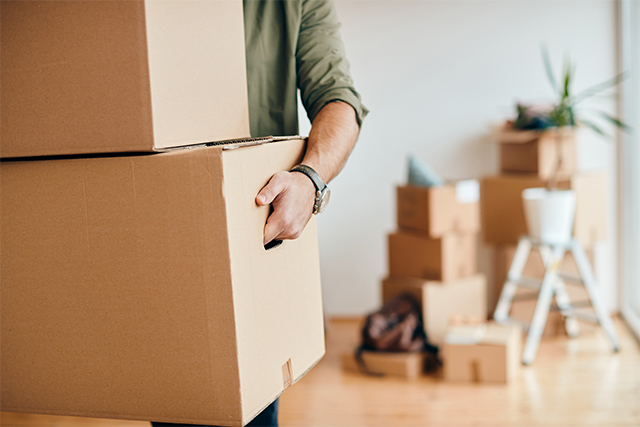Springtime marks the beginning of a new season for home movers. With the promise of new beginnings, it’s no wonder that March sees a surge in moving plans. Whether you’re relocating to a new town or simply transitioning to a new home within the same area, the process of packing up your life and moving can be both exciting and overwhelming. To ensure a smooth transition, it’s crucial to navigate through the packing process efficiently, steering clear of common pitfalls that could derail your moving experience. In this guide, we’ll explore some of the most prevalent packing mistakes and provide tips on how to avoid them.

1. Choosing the Right Packing Materials
- Opt for Sturdy Cardboard Boxes
When it comes to packing your belongings, the choice of packing materials can significantly impact the safety of your items during transit. While it may be tempting to scrimp on packing supplies, you should buy cardboard boxes that are sturdy and durable. Single-wall cardboard boxes are a popular choice for moving due to their affordability and versatility. However, it’s crucial to assess the weight and fragility of your items before selecting the appropriate box thickness. For heavier or more delicate items, consider investing in double-wall cardboard boxes to provide added protection.
2. Packing Strategically
- Sort and Declutter Before Packing
One of the most common mistakes people make when packing for a move is failing to declutter beforehand. Moving presents an excellent opportunity to assess your belongings and part ways with items you no longer need or use. Before you start packing, take the time to sort through your possessions and set aside items for donation, sale, or disposal. Not only will this streamline the packing process, but it will also save you time and effort in the long run.
- Organise and Label Boxes
Another packing pitfall to avoid is haphazardly packing items without any semblance of organisation. As you pack, be sure to label each box clearly with its contents and the room it belongs to. This simple step will not only make unpacking more manageable but will also help movers or friends assisting with the move know where to place each box in your new home.
3. Protecting Fragile Items
- Wrap Fragile Items Securely
Fragile items such as glassware, ceramics, and electronics require extra care during the packing process to prevent breakage. Invest in quality packing materials such as bubble wrap, packing paper, and foam peanuts to cushion fragile items adequately. Wrap each delicate item individually, ensuring that there is ample padding to absorb any impact during transit. Additionally, consider packing fragile items in smaller boxes to prevent them from shifting and breaking.
4. Avoiding Overpacking
- Mind the Weight Limit
While it may be tempting to cram as many items as possible into each box to minimise the number of trips, overpacking can lead to a host of issues. Not only does overpacking increase the risk of boxes tearing or breaking during transit, but it also makes them challenging to lift and carry. Be mindful of the weight limit indicated on each box and distribute heavy items evenly to prevent strain on the box and those handling it.
5. Seeking Professional Assistance
- Consider Hiring a Professional Moving Company
Finally, one of the most significant mistakes people make when moving is underestimating the complexity of the process. While a DIY move may seem cost-effective initially, it can quickly become overwhelming, particularly for long-distance relocations or large households. Consider enlisting the help of a professional moving company who have the expertise and resources to ensure a smooth and stress-free move. From packing and loading to transportation and unpacking, these companies can handle every aspect of your move with efficiency and care.
Final Thoughts
In conclusion, avoiding common packing pitfalls is essential for a successful and stress-free move. By choosing the right packing materials, packing strategically, protecting fragile items, avoiding overpacking, and seeking professional assistance when needed, you can streamline the moving process and ensure that your belongings arrive at your new home safe and sound. So, as you embark on your house move this spring, keep these tips in mind to make your transition as seamless as possible. Happy moving!
